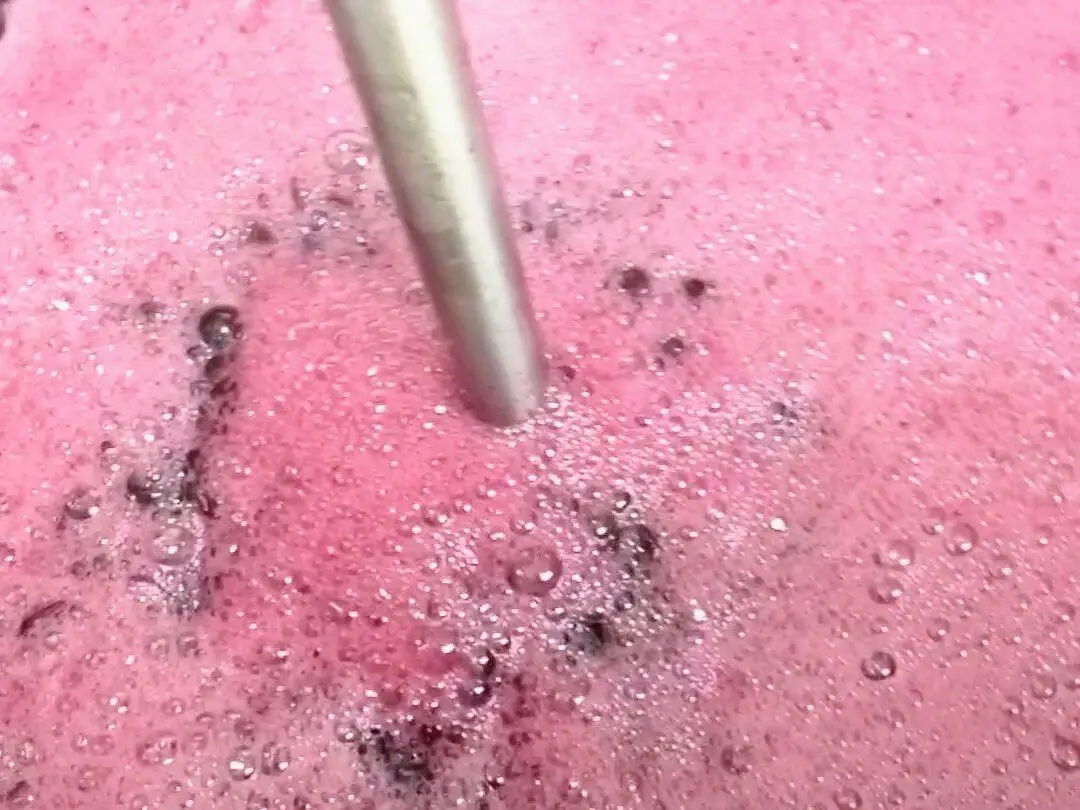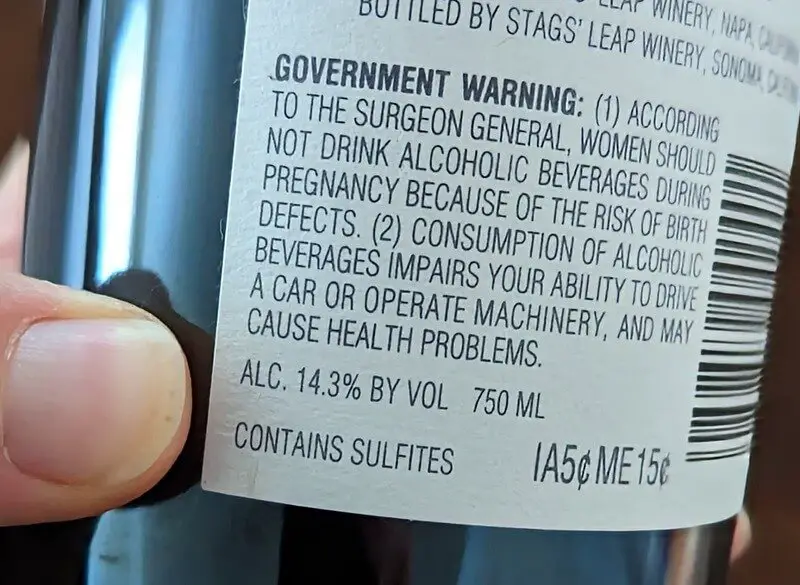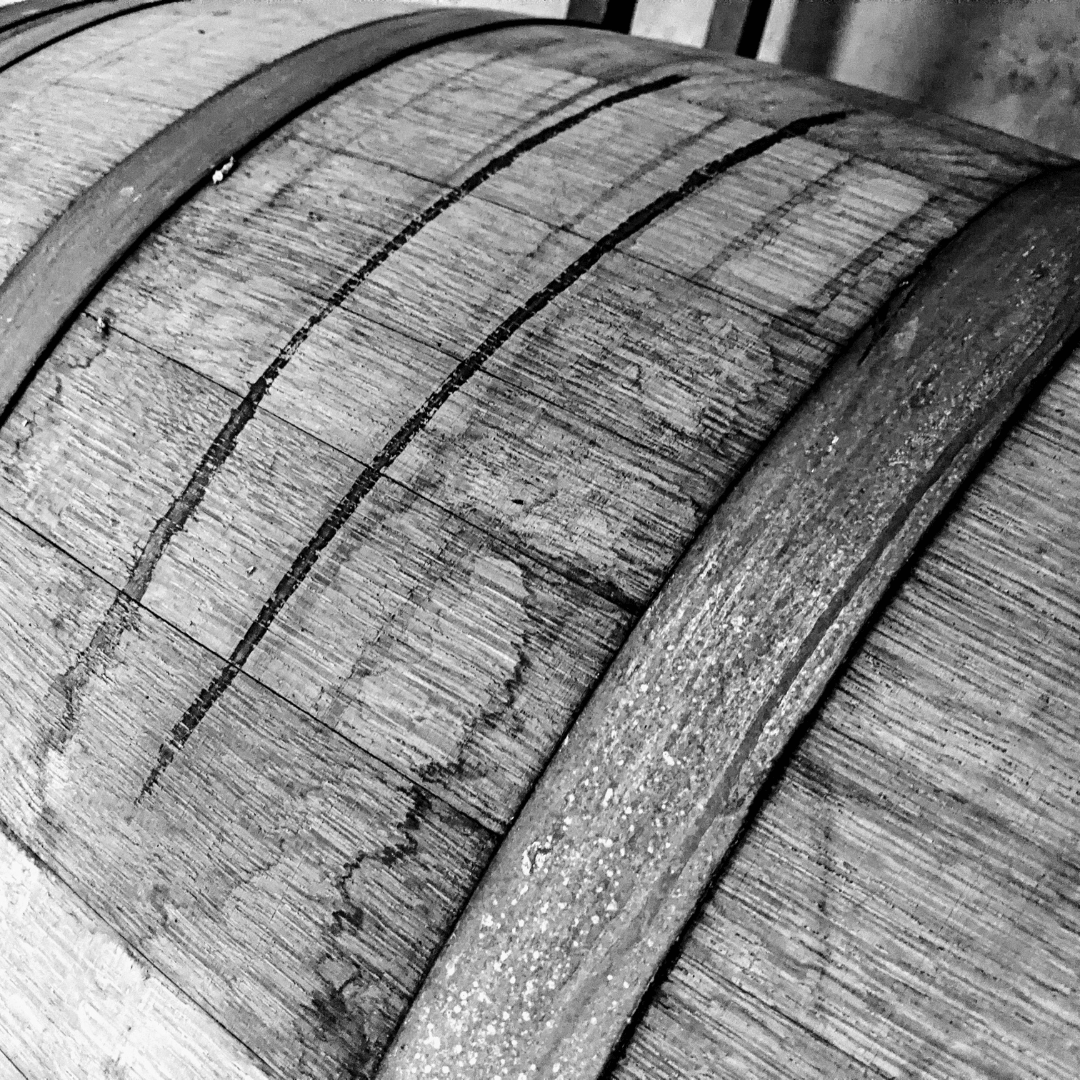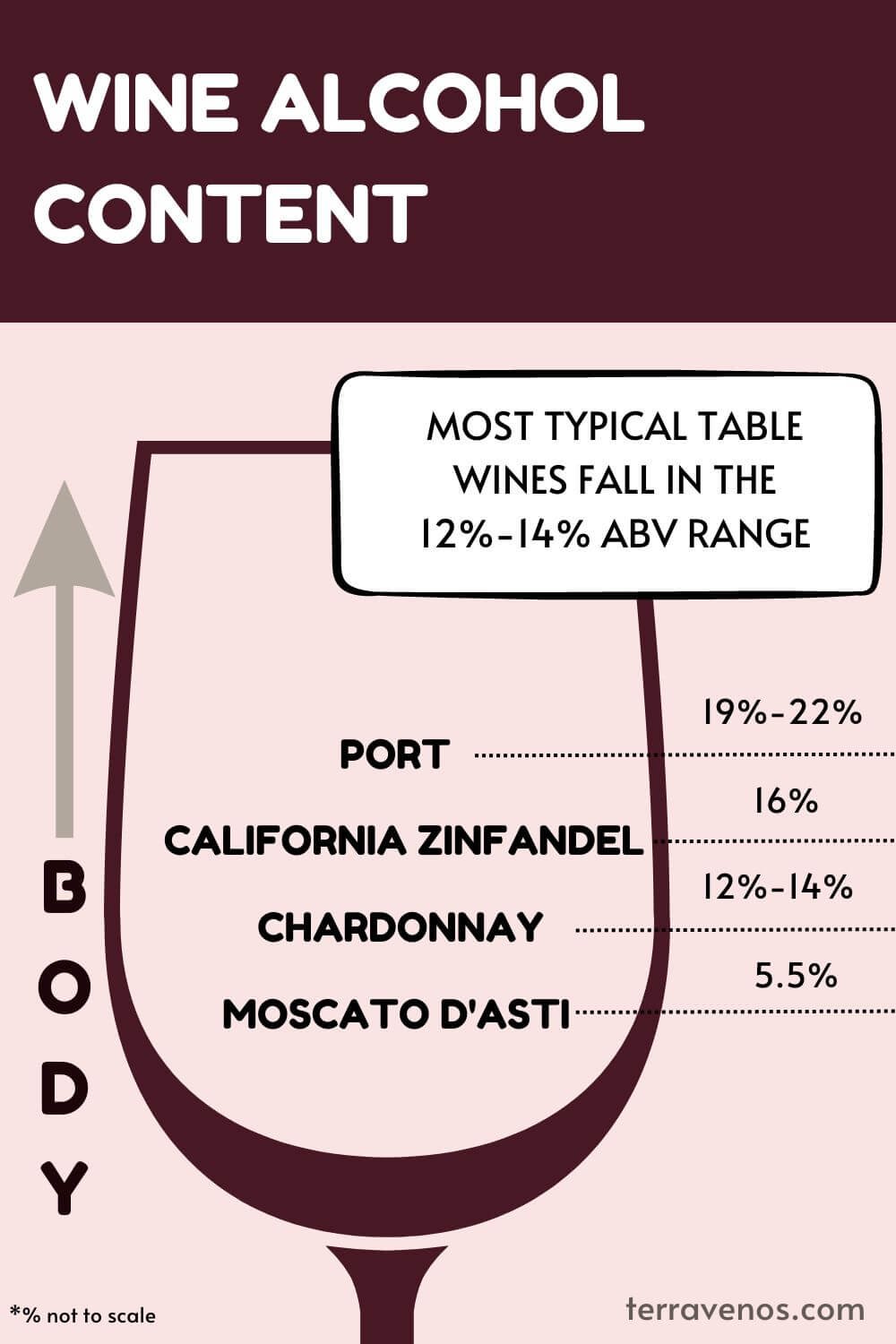
Humans have made fermented foods for thousands of years. But just how does fermentation (and wine fermentation specifically) work?
Bacteria, yeast, and other microorganisms can ferment foods. In wine, yeast consume sugar in grape juice and convert it into ethanol (alcohol), heat, and carbon dioxide. Fermentation is a chemical process that changes one product to another. Yogurt, cheese, soy sauce, kimchi, sauerkraut, salami, beer, and wine are all fermented foods.
Here’s what you need to know about fermentation 101.
- Where Did Winemaking Start?
- Why Ferment Foods?
- How Does Alcoholic Fermentation Work with Wine?
- What Factors Affect Fermentation?
- How Do Winemakers Know When Fermentation’s Done?
- Common Wine Fermentation Questions
- Does Fermenting Wine Make It Alcoholic?
- Does Longer Fermentation Mean More Alcohol in Wine?
- How Many Years Does It Take for Wine to Ferment?
- How Does Wine Fermentation Temperature Affect Wine?
- What Happens If You Let Wine Ferment Too Long?
- How Much Alcohol Is in Wine During Fermentation?
- Does Adding More Yeast to Wine Make It Stronger?
Where Did Winemaking Start?
Researchers currently believe grape wine originated in the Caucasus mountains (modern day Georgia) some 8,000 years ago. Scroll in to discover where on this map and explore:
And while the scientific understanding behind fermentation continues to evolve, the process of fermentation for winemaking remains essentially unchanged since time immemorial.
Humans and wine have been together for a long, long time.
Why Ferment Foods?
Humans began fermenting because it preserves food – allowing them to keep food stores for longer periods of time before modern refrigeration.
For example, milk spoils within a day if there’s no way to keep it cool.
Extend that time to a week with refrigeration.
A week’s better than a day but still limited. If that milk’s turned into cheese, though, then it can be preserved for months.
And you get the added bonus of enjoying cheese plates with your wine.
Go Explore: What’s the buzz about Unfined Unfiltered Wine? Take a walk on the wild side of winemaking and explore the unfiltered truth about these bold and untamed wines.
How Does Alcoholic Fermentation Work with Wine?

Wine fermentation relies on yeast, either ambient (living naturally in the air or on the grapes), or cultured (added by the winemaker).
Yeast consume the sugar in the grape juice and, in the absence of oxygen, produce ethanol – or alcohol – as a byproduct. During this process, yeast also give off carbon dioxide (gas) and energy (heat).
Here’s the nerdy chemical formula if you’re interested:

Fun Wine Fact: If you look at the formula above on how wine fermentation works, you’ll see that the process gives off carbon dioxide. Not great for the environment. DID YOU KNOW – forward-thinking, cutting edge wine producers are figuring out ways to capture carbon dioxide emissions during fermentation for re-use as clean energy, which is pretty darn neat. Here’s a more in-depth article on what wineries are trying to do for carbon capture (external link).
What Factors Affect Fermentation?

Six key factors affect wine fermentation
Temperature
Fermentation produces heat. The growth rate of yeast, and therefore their ability to consume sugar, doubles for every 10℉ rise in temperature. The warmer the grape juice, the faster the fermentation.
However, at about 95℉-100℉, the yeast will die.
It’s like being in a hot tub for too long.
Hotter fermentations also decrease the volatile aromas (compounds that produce pleasant smells) in white wines. Check out this list of common wine fermentation temperatures for famous wines from around the world:
Famous Wines & Fermentation Temperatures
| Wine | Grape(s) | Celsius | Fahrenheit |
|---|---|---|---|
| Red Bordeaux | Cabernet Sauvignon, Merlot | 25-30°C | 77-86°F |
| Burgundy | Pinot Noir, Chardonnay | 20-28°C | 68-82°F |
| Rioja | Tempranillo, Garnacha | 25-30°C | 77-86°F |
| Barolo | Nebbiolo | 26-30°C | 79-86°F |
| Chianti | Sangiovese | 25-30°C | 77-86°F |
| Shiraz/Syrah | Shiraz, Syrah | 22-28°C | 72-82°F |
| Cabernet Sauvignon | Cabernet Sauvignon | 25-30°C | 77-86°F |
| Zinfandel | Zinfandel | 22-28°C | 72-82°F |
| Riesling | Riesling | 12-18°C | 54-64°F |
| Sauvignon Blanc | Sauvignon Blanc | 12-16°C | 54-61°F |
| Chardonnay | Chardonnay | 16-20°C | 61-68°F |
| Champagne/Sparkling Wine | Various | 14-18°C | 57-64°F |
Note: Fermentation temperature ranges may vary based on winemakers’ preferences, grape varieties, and desired wine styles.
pH
Yeast grow best at around 5.5 pH. Wines need a pH of ~2.9 – 3.6 to prevent spoilage. Winemakers use cultured yeast strains tolerant of lower pH.
Sulfur Dioxide (SO2)
You’ll almost always see a warning note ‘Contains Sulfites’ on wine labels in the US. SO2 (pronounced ess-oh-two) acts as a preservative to prevent spoilage. Wineries may add small doses of SO2 at harvest to kill back wild microbes that could cause off-flavors.
Nitrogen and Nutrients
In addition to sugar, yeast need nutrients, specifically nitrogen, to help with their lifecycle metabolism. Too little nitrogen can cause hydrogen sulfide (rotten egg smell) to develop as the yeast struggle to survive in the new wine.
Funky Wine Tip: You may actually get a wine that smells like rotten egg or cabbage. This off-smell comes from stressed-out yeast that needed more nutrients during fermentation. Fear not! Give your wine a vigorous swirl and that funky aroma should blow off pretty quickly – or run your wine through an aerator.
Sugar
Yeast consume sugar and convert it into alcohol. The more sugar available in the grapes, the more food that the yeast can turn into alcohol, and the higher a wine’s final alcohol level. Grapes with very higher levels of sugar levels can take 2-3 months for yeast to ferment – or may never ferment completely.
Fun Wine Fact: Unfortified sweet dessert wines come from grapes that have very high sugar. Sauternes, Tokaji, late harvest, and icewines all have more sugar than the yeast can convert into alcohol.
Helpful Tip: Check out this post on Why are some wines sweet that goes into more detail on wine sweetness if you’re interested.
Fun Wine Fact: Did you know there are different species of yeast? Each species has different qualities. Thanks to our little yeasty buddies, fermentation gives us the incredible gift of wine. Check out how winemakers select yeast here.
Alcohol

Yeast are sensitive to alcohol levels. At about 13% ABV, yeast begin to struggle and die.
When a wine is both high sugar and high alcohol, yeast die off, leaving a little sweetness in your wine.
Helpful Tip: Here’s a post that goes into wine structure – a key ingredient is alcohol.
Lodi Zinfandels that can be 15.8% or even 16% ABV are famous for having a little leftover grape juice in them. The yeast is like: “I can’t take this anymore,” and give up and die.
Helpful Tip: Here’s a post I put together that lists different wines and wine styles made around the world and their typical range of alcohol level.
How Do Winemakers Know When Fermentation’s Done?
Winemakers use an instrument called a hydrometer to check and see if wine fermentation is done.
A hydrometer looks a little like a thermometer but it works by floating on top of the wine and measuring the wine’s density.
The more sugar there is in the wine, the denser the liquid, and the higher the reading (fermentation’s not done yet). The more alcohol there is, the lower the reading letting the winemaker know that fermentation’s almost over.
The hydrometer measurement uses a term called specific gravity, or SG for short.
You can see the small markings on the hydrometer that let you know how far along you are with fermentation. When fermentation is over, the hydrometer sinks to the bottom of the tube.
Common Wine Fermentation Questions

Does Fermenting Wine Make It Alcoholic?
Yes, the process of fermenting changes grape juice into wine and makes it alcoholic. The process depends on yeast and sugar. The yeast metabolize (eat) the sugar in the grape juice, and transform it to ethanol (alcohol).
Helpful Tip: I put together this post on oak and winemaking, which contributes more than you might think to wine.
Does Longer Fermentation Mean More Alcohol in Wine?
No. The level of alcohol in a wine depends on the starting level of sugar in the grapes. The riper the grapes (more sugar), the more food the yeast have to eat and convert into alcohol.
Very ripe grapes from hot regions make high-alcohol wines. Barely ripe grapes from cool regions make lower alcohol wines.
Fun Wine Fact: Winemakers can manipulate the style of their wines to stop fermentation early (there’s still grape juice for yeast to eat). This will result in a lower alcohol wine with some sweetness. They can also add sugar to grape juice before fermentation starts to make a wine more alcoholic (this can be helpful in years when the grapes struggle to ripen).
Quick Tip: If you’ve heard of the term “natural wines”, then here’s what you need to know about the natural wine movement.
How Many Years Does It Take for Wine to Ferment?

Wine takes weeks, not years to ferment. You’re probably thinking about aging wines. After fermentation, the producer will set the wine aside and age it for several months up to several years before the new wine is released for sale.
Wines take 5 days to 3 weeks to finish fermenting.
The warmer the fermentation temperature, the faster the yeast will metabolize all of the grape juice and turn it into wine. Cooler fermentations slow down yeast’s metabolism and the fermentation will take longer.
Wineries can invest in temperature-controlled fermentation tanks that will automatically adjust the temperature of the fermentation so that the winemaker can have complete control over the fermentation timeline.
Helpful Tip: Check out this post: What can you ferment wine in? There are tons of options – from traditional barrels to modern steel tanks.
How Does Wine Fermentation Temperature Affect Wine?
The temperature of the fermentation is actually pretty important and can affect the aromas and flavors differently in red and white wines.
Fun Wine Fact: Red wines are fermented at higher temperatures than white wines.
- Red Wine Fermentation: In red wines, warmer fermentation temperatures help with color extraction. All of the color compounds in your red wine come from grape skins. The grapes need to go through warmer fermentations to maximize color extraction. Cooler fermentations will extract less color and your red wine will be lighter. (I actually struggle with color extraction when I make red wines because I live in a cool region.)
- White Wine Fermentation: In white wines, cooler fermentations help prevent premature oxidation (the wine goes off and turns brownish), and it also helps preserve fruity aromatics. Very cool fermentations will actually give white wines pear drop and banana aromas. Who knew?!? (Here’s more on where wine aromas come from.)
What Happens If You Let Wine Ferment Too Long?
Wine fermentation stops naturally after the yeast consumes all of the sugar, so it can’t ferment too long.
After the yeast have metabolized all of the sugar, they die and fall to the bottom of the tank.
If the winemaker doesn’t take the young wine off of the dead yeast, this can lead to microbial spoilage and ruin the young wine.
How Much Alcohol Is in Wine During Fermentation?

During fermentation, a wine starts out with zero alcohol (technically it’s still juice).
Over the course of 5 days to 3 weeks, the alcohol level rises as it ferments.
Most wines will stop fermentation between 11% -14% ABV, but some wines can have much less or much more alcohol.
Does Adding More Yeast to Wine Make It Stronger?
No, adding more yeast to wine won’t make it any stronger.
The wine’s final alcohol is based on the starting level of sugar in the juice, not the amount of yeast added.
Winemakers do measure and add precise amounts of yeast because they want the wine to fully ferment. An active fermentation is a clean fermentation.
Slow ferments can allow for spoilage microbes to take hold.
(Go check out that post on how winemakers choose yeast here. It’s a little nerdy, but a good read.)
Thirsty for More?
And if you’ve made it this far (I’m impressed!) and you still have a thirst for knowledge, then check out this post on where wine aromas come from.
Here’s a post on phylloxera and why it’s important to the history of wine. Interested in the vineyard?
Check out what happens during veraison, a transformative time every season.
Why Does My Wine Taste Like Butter? Get the scoop on why your wine has that buttery flavor and discover tips to fully savor your sips.
Peek behind the scenes of red winemaking and find out what happens to red grapes on the big harvest day.




